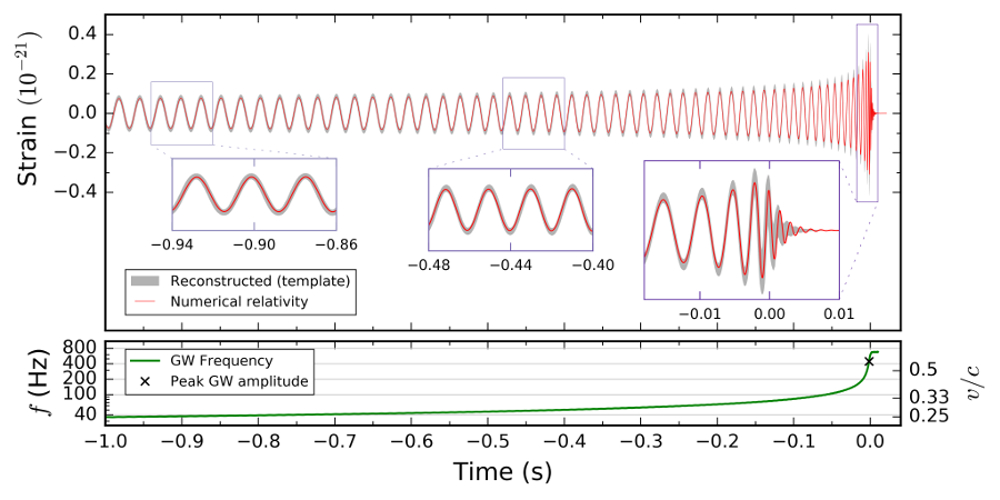
 Credit: B. P. Abbott et al.; LIGO Scientific Collaboration and Virgo Collaboration
Credit: B. P. Abbott et al.; LIGO Scientific Collaboration and Virgo Collaboration
The Second Merger
The very first detection of gravitational radiation from the merger of two black holes produced a lot of excitement and raised a lot of questions: how often do these events happen? how many such systems are there? will we ever detect another such event? Astrophysicists waited with great anticipation the announcement of another merger. Now, only a few months after the first detection, the LIGO and Virgo collaborations have announced the second detection of gravitational radiation from the inspiral, collision and merger of two black holes. This event, dubbed GW151226, was observed on December 26th at 03:38:53 Universal Time. The image above shows the reconstructed data from the Advanced LIGO detector located in Livingston, Louisiana. The grey bands in the upper image shows the oscillation of the LIGO detectors with time due to the passage of the gravitational wave, while the red line shows the theoretical oscillation calculated from Einstein's General Theory of Relativity. The calculations were carried out for a huge number of different values of masses and spins for the two black holes, and the red line is the combination of parameters that best matches the data. As both the data and the model show, as the black holes spiral together, the gravitational waves increase in amplitude, and the oscillations become increasingly rapid. This increase in wave frequency with time approaching the final merger of the black hole is shown by the green line in the lower panel. The data analysis shows that this event was most probably produced by the collision of a black hole having a mass of 10-25 times the mass of the sun with another having a mass of about 4-10 times the mass of the sun. This event converted about the mass of the sun directly into gravitational radiation energy, and, at its peak, the gravitational wave power produced outshone the light radiation power of all the stars and galaxies in the known Universe.
Published: June 20, 2016
<
HEA Dictionary ● Archive
● Search HEAPOW
● Other Languages
● HEAPOW on Facebook
● Download all Images
● Education ● HEAD
>

Each week the HEASARC
brings you new, exciting and beautiful images from X-ray and Gamma ray
astronomy. Check back each week and be sure to check out the HEAPOW archive!
Page Author: Dr. Michael F. Corcoran
Last modified Tuesday, 27-Feb-2024 10:15:17 EST


